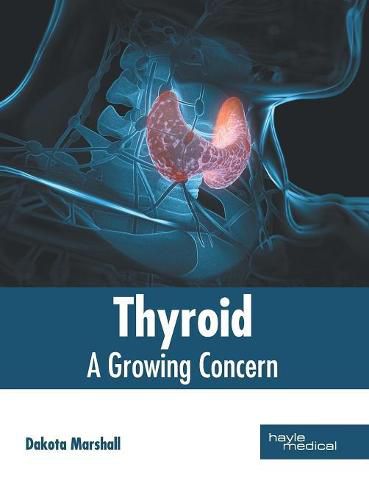Readings Newsletter
Become a Readings Member to make your shopping experience even easier.
Sign in or sign up for free!
You’re not far away from qualifying for FREE standard shipping within Australia
You’ve qualified for FREE standard shipping within Australia
The cart is loading…






This title is printed to order. This book may have been self-published. If so, we cannot guarantee the quality of the content. In the main most books will have gone through the editing process however some may not. We therefore suggest that you be aware of this before ordering this book. If in doubt check either the author or publisher’s details as we are unable to accept any returns unless they are faulty. Please contact us if you have any questions.
The thyroid gland is an endocrine gland in the neck, which secretes thyroid hormones. These are responsible for protein synthesis and maintenance of the metabolic rate of the body. The thyroid is susceptible to a number of diseases. The conditions of the thyroid gland can be classified into five types- hypothyroidism, hyperthyroidism, structural abnormalities, benign or cancerous tumors and abnormal thyroid function without clinical symptoms. The gland can develop several nodules. Thyroid nodules may either be hyperplasia or a thyroid neoplasm. Goitres can be uninodular or multinodular or can be diffuse. For the diagnosis of thyroid diseases, the examination of the thyroid gland is crucial. This includes the search for abnormal masses and assessment of thyroid size. Systemic signs such as hair loss, weight gain or loss, swelling of the calves and protrusion of the eyes are some symptomatic signs of an underlying thyroid condition. Hypothyroidism affects around 3-10% adults, with women and the elderly being the most affected. It is estimated that one-third of the world's population has low iodine levels in diet, resulting in high prevalence of goiter. Depending on the diagnosis, medication, surgery and radioiodine therapy may be used for the treatment of thyroid disease. This book explores all the important aspects of thyroid disease in the present day scenario. The various studies that are constantly contributing towards advancing the understanding of thyroid function and pathology are examined in detail. It is an essential guide for both academicians and those who wish to pursue the study of endocrine and metabolic disorders.
$9.00 standard shipping within Australia
FREE standard shipping within Australia for orders over $100.00
Express & International shipping calculated at checkout
This title is printed to order. This book may have been self-published. If so, we cannot guarantee the quality of the content. In the main most books will have gone through the editing process however some may not. We therefore suggest that you be aware of this before ordering this book. If in doubt check either the author or publisher’s details as we are unable to accept any returns unless they are faulty. Please contact us if you have any questions.
The thyroid gland is an endocrine gland in the neck, which secretes thyroid hormones. These are responsible for protein synthesis and maintenance of the metabolic rate of the body. The thyroid is susceptible to a number of diseases. The conditions of the thyroid gland can be classified into five types- hypothyroidism, hyperthyroidism, structural abnormalities, benign or cancerous tumors and abnormal thyroid function without clinical symptoms. The gland can develop several nodules. Thyroid nodules may either be hyperplasia or a thyroid neoplasm. Goitres can be uninodular or multinodular or can be diffuse. For the diagnosis of thyroid diseases, the examination of the thyroid gland is crucial. This includes the search for abnormal masses and assessment of thyroid size. Systemic signs such as hair loss, weight gain or loss, swelling of the calves and protrusion of the eyes are some symptomatic signs of an underlying thyroid condition. Hypothyroidism affects around 3-10% adults, with women and the elderly being the most affected. It is estimated that one-third of the world's population has low iodine levels in diet, resulting in high prevalence of goiter. Depending on the diagnosis, medication, surgery and radioiodine therapy may be used for the treatment of thyroid disease. This book explores all the important aspects of thyroid disease in the present day scenario. The various studies that are constantly contributing towards advancing the understanding of thyroid function and pathology are examined in detail. It is an essential guide for both academicians and those who wish to pursue the study of endocrine and metabolic disorders.